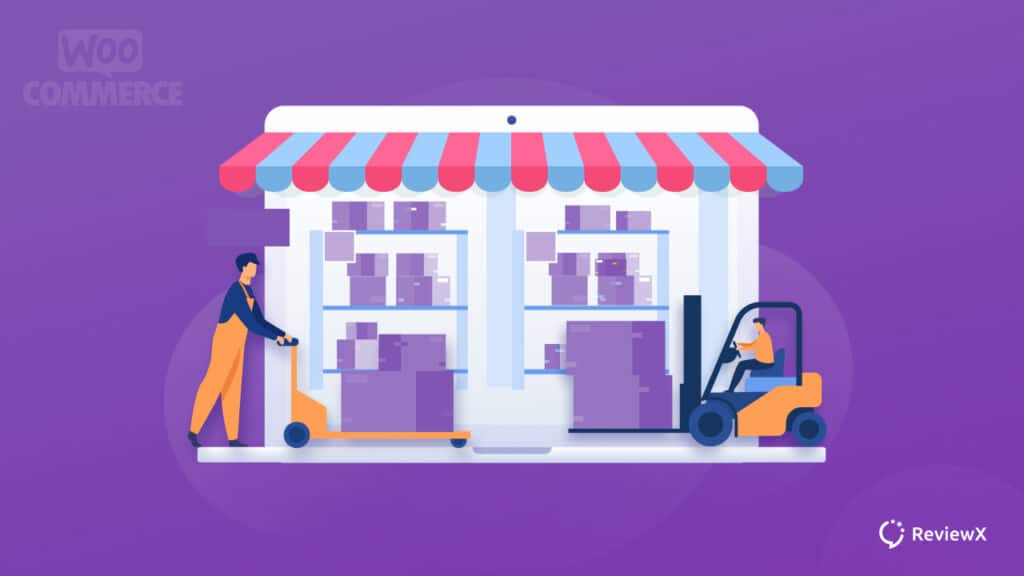खुदरा स्टोर के मालिक के तौर पर, सही मात्रा में इन्वेंट्री रखना बहुत ज़रूरी है। ज़रूरत से ज़्यादा स्टॉक रखने से ज़्यादा इन्वेंट्री महंगी हो सकती है, जबकि कम स्टॉक रखने से बिक्री के मौके चूक सकते हैं। दोनों ही वजहों से व्यापार की वृद्धि बाधित हो सकती है और संभावित ग्राहक और ग्राहक असंतुष्ट हो सकते हैं।
बिक्री के लिए सही मात्रा में सामान और सेवाओं को तैयार करने के लिए आपको कितनी तैयारी और व्यवस्था करने की आवश्यकता है, इस बारे में सूचित निर्णय लेने के लिए उचित प्रबंधन की आवश्यकता होती है। ओवरस्टॉकिंग की समझ और अंडरस्टॉकिंग। लेकिन इसके साथ व्यापक गाइड, हम पूर्व की ओर देखेंगे - परिभाषा, प्रमुख कारण, और आपके स्टोर की उत्पादकता और लाभप्रदता पर प्रभाव - ताकि आप इसे रोकने और अपने इन्वेंट्री प्रबंधन को अनुकूलित करने के लिए बेहतर ढंग से सुसज्जित हो सकें।

💡 ओवरस्टॉकिंग को समझना: परिभाषा
ओवरस्टॉकिंग, जिसे "ओवरस्टॉकिंग" के रूप में भी जाना जाता हैअधिशेष स्टॉक, " तब होता है जब खुदरा विक्रेता अधिक उत्पाद खरीदें आपूर्तिकर्ताओं से जितना वे अपनी दुकानों में बेच या संग्रहीत कर सकते हैं (चाहे वे ऑनलाइन हों या भौतिक)। इससे इन्वेंट्री की अधिकता जो स्टोर की अलमारियों या गोदामों में पड़ा रहता है, जिससे अंततः लाभप्रदता को नुकसान पहुँचता है। कई खुदरा विक्रेताओं के लिए ओवरस्टॉकिंग एक आम चुनौती है, लेकिन सावधानीपूर्वक विश्लेषण, गणना और योजना के माध्यम से इसे कम किया जा सकता है।
इससे बचने के लिए, ओवरस्टॉकिंग को समझना सबसे पहले ज़रूरी है। अच्छी इन्वेंट्री प्रबंधन प्रणालीमांग की भविष्यवाणी करने के लिए उपकरणों का उपयोग करें, और प्रदाताओं के साथ स्मार्ट संबंध बनाएं। अपने स्टॉक स्तरों का सर्वोत्तम उपयोग करके, स्टोर अपने नकदी प्रवाह में सुधार कर सकते हैं, अपनी होल्डिंग लागत कम कर सकते हैं, और अपने व्यवसाय को अधिक कुशलता से चला सकते हैं।
नियमित आधार पर बाजार के रुझान और ग्राहकों की पसंद की जांच करना आपूर्ति से मेल खाने में मदद करता है मांग के साथ तालमेल बिठाना, आपूर्ति श्रृंखला को अधिक लचीला बनाना और त्वरित कार्रवाई करना। बहुत अधिक इन्वेंट्री होने से होने वाली समस्याओं से बचने और खुदरा दुनिया में प्रतिस्पर्धा में आगे रहने के लिए, आपको ओवरस्टॉकिंग को समझने में सक्रिय होने की आवश्यकता है।
🎯 ओवरस्टॉकिंग के मुख्य कारण: क्या देखना है
खुदरा विक्रेता अक्सर इसलिए सामान जमा कर लेते हैं क्योंकि उन्हें नहीं पता होता कि ग्राहक क्या चाहते हैं या बाजार किस तरह आगे बढ़ रहा है। इसे गलत मांग पूर्वानुमान कहा जाता है। पूर्वानुमान लगाने में ये गलतियाँ ग्राहकों के व्यवहार में अचानक बदलाव, मौसम में बदलाव और डेटा का सही तरीके से विश्लेषण न करने के कारण हो सकती हैं। इसे रोकने के लिए ओवरस्टॉकिंग के कारणों को समझना ज़रूरी है। आइए कुछ प्रमुख कारणों का पता लगाते हैं:
📌 ग्राहक की मांग
जरूरत से ज्यादा स्टॉक रखने का एक मुख्य कारण गलत आकलन करना है। ग्राहक की मांगकई खुदरा विक्रेता जानकारी की कमी से जूझते हैं जब वे समझते हैं ग्राहकों का व्यवहार और प्राथमिकताएँग्राहकों की मांग का गलत आकलन करने से बचने के लिए, खुदरा विक्रेताओं को ग्राहकों के व्यवहार, बार-बार खरीदारी और वरीयताओं पर डेटा एकत्र करने पर ध्यान केंद्रित करना चाहिए।
📌 स्टॉक खत्म होने का डर
स्टॉक खत्म होने का डर, जिसे स्टॉकआउट भी कहा जाता है, खुदरा विक्रेताओं के लिए एक आम चिंता है। स्टॉकआउट के कारण बिक्री में कमी, निराश ग्राहक और ब्रांड की प्रतिष्ठा को नुकसान हो सकता है। स्टॉकआउट को रोकने के लिए, कुछ खुदरा विक्रेता ज़रूरत से ज़्यादा स्टॉक करके इसकी भरपाई करते हैं। हालाँकि, इससे कई तरह की समस्याएँ हो सकती हैं।
📌 प्रचारात्मक विपणन विफलता
बहुत अधिक निर्भर रहना प्रचारात्मक विपणन बिक्री बढ़ाने के लिए ओवरस्टॉकिंग में योगदान हो सकता है। खुदरा विक्रेता इस धारणा के आधार पर बड़ी मात्रा में उत्पाद खरीद सकते हैं कि एक आकर्षक विपणन अभियान से बिक्री बढ़ेगी। हालाँकि, संरेखित करके विपणन प्रयासों ग्राहकों की मांग के अनुसार, खुदरा विक्रेता अत्यधिक स्टॉक से बच सकते हैं, जिसे बेचना मुश्किल हो सकता है।
📌 खराब तरीके से प्रबंधित इन्वेंट्री प्रबंधन
इन्वेंट्री और वहन लागत के बारे में जानकारी की कमी के कारण अतिरिक्त स्टॉक हो सकता है। वहन लागत में इन्वेंट्री रखने या संग्रहीत करने से संबंधित व्यय शामिल हैं, जैसे कि श्रमिक वेतन, शिपिंग, वेयरहाउसिंग और मूल्यह्रास। इन्वेंट्री प्रबंधन सॉफ़्टवेयर को लागू करना और इन्वेंट्री लागत का विश्लेषण अधिक स्टॉकिंग को रोकने में मदद मिल सकती है।
📌 आपूर्ति श्रृंखला मुद्दे
आपूर्ति श्रृंखला में व्यवधान, जैसे कि कमी और शिपिंग की समस्याएँ, खुदरा विक्रेताओं को इन्वेंट्री की अधिक खरीद करके अधिक क्षतिपूर्ति करने के लिए प्रेरित कर सकती हैं। जबकि ऑन-शेल्फ उपलब्धता बनाए रखना आवश्यक है, खुदरा विक्रेताओं के पास पॉइंट-ऑफ़-सेल सिस्टम से जानकारी इकट्ठा करने के लिए डेटा टूल होने चाहिए।
📌 विभिन्न उद्योगों के लिए चुनौतियाँ
विभिन्न उद्योगों को अद्वितीय ओवरस्टॉकिंग चुनौतियों का सामना करना पड़ता है। उदाहरण के लिए, फैशन और परिधान उद्योग अक्सर मौसमी रुझानों की मांग का पूर्वानुमान लगाने के कारण ओवरस्टॉक किए गए कपड़ों से जूझते हैं। खुदरा विक्रेताओं को खराब होने वाले सामानों के साथ भी चुनौतियों का सामना करना पड़ सकता है, क्योंकि कुछ उत्पादों के सीमित शेल्फ जीवन के लिए सटीक मांग पूर्वानुमान की आवश्यकता होती है।
📦 खुदरा दुकानों पर ओवरस्टॉकिंग का प्रभाव

जब स्टोर के पास बहुत ज़्यादा इन्वेंट्री होती है, तो वे उन वस्तुओं में पूंजी लगा देते हैं जो बिक नहीं रही होती हैं। इससे होल्डिंग लागत बढ़ जाती है, और स्टोर को पैसे कमाने के लिए वस्तुओं पर छूट देनी पड़ सकती है। साथ ही, इससे शेल्फ़ स्पेस का इस्तेमाल करना मुश्किल हो जाता है। इन्वेंट्री का ज़रूरत से ज़्यादा स्टॉक होने से खुदरा स्टोर के लिए गंभीर परिणाम हो सकते हैं, जिनमें नीचे दिए गए परिणाम शामिल हैं:
1. भंडारण की लागत
ओवरस्टॉकिंग का एक तत्काल प्रभाव भंडारण लागत में वृद्धि है। अतिरिक्त इन्वेंट्री गोदामों या स्टोर अलमारियों में मूल्यवान स्थान ले लेती है, जिससे उन उत्पादों को रखने में बाधा आती है जिन्हें बेचा जा सकता है। खुदरा विक्रेताओं को गोदाम, श्रम और मूल्यह्रास से संबंधित खर्च उठाना पड़ता है, जिससे उनकी अंतिम पंक्ति प्रभावित होती है।
2. नकदी प्रवाह के मुद्दे
ज़रूरत से ज़्यादा स्टॉक रखने से बहुमूल्य कार्यशील पूंजी फंस जाती है। खुदरा विक्रेता ऐसी इन्वेंट्री खरीदने में पैसा लगाते हैं जो तुरंत नहीं बिक सकती, उनकी क्षमता को कम करना निवेश की वसूली के लिए। इससे नकदी प्रवाह की समस्याएँ पैदा हो सकती हैं, जिससे खुदरा विक्रेताओं को लोकप्रिय वस्तुओं को फिर से स्टॉक करने या अपने वर्गीकरण में नए उत्पाद शामिल करने से रोका जा सकता है।
3. उत्पाद समाप्ति
अधिक स्टॉक रखने से खराब होने वाले सामान बेचने वाले खुदरा विक्रेताओं के लिए उत्पाद की समाप्ति और अप्रचलन हो सकता है। खाद्य या सौंदर्य उत्पादों जैसे कुछ उत्पादों के सीमित शेल्फ जीवन के कारण, अत्यधिक मात्रा में समाप्त हो चुके इन्वेंट्री से बचने के लिए सावधानीपूर्वक इन्वेंट्री प्रबंधन की आवश्यकता होती है।
4. लाभ मार्जिन में कमी
अतिरिक्त इन्वेंट्री को बेचने के लिए अक्सर भारी छूट की आवश्यकता होती है, जिससे उत्पादों की लाभप्रदता प्रभावित होती है। खुदरा विक्रेताओं को अधिक स्टॉक वाली वस्तुओं की बिक्री में तेजी लाने के लिए अतिरिक्त समय और संसाधनों का निवेश करने की आवश्यकता हो सकती है, जिससे लाभ मार्जिन और भी कम हो जाता है।
5. बर्बाद संसाधन और समय
अतिरिक्त इन्वेंट्री को प्रबंधित करने के लिए अतिरिक्त संसाधनों और समय की आवश्यकता होती है। खुदरा विक्रेताओं को अधिक स्टॉक वाली वस्तुओं को संभालने, संग्रहीत करने और बेचने के लिए जनशक्ति और संसाधनों को आवंटित करना चाहिए। इससे मूल्यवान संसाधन खत्म हो जाते हैं जिनका उपयोग अन्य व्यावसायिक कार्यों के लिए किया जा सकता है।
ज़रूरत से ज़्यादा सामान रखने से बचें: सुझाव और सर्वोत्तम अभ्यास

जरूरत से ज्यादा स्टॉकिंग से बचने के लिए, मांग का सटीक अनुमान लगाना, आपूर्ति को रणनीतिक तरीके से संभालना और आपूर्तिकर्ताओं के साथ मजबूत संबंध बनाना महत्वपूर्ण है। रियल टाइम डेटा विश्लेषण, बाजार के रुझानों के साथ बने रहें, और सबसे अच्छे पुनरारंभ स्थान खोजें। यहाँ कुछ रणनीतियाँ हैं जिन पर विचार किया जा सकता है:
🎯 सटीक मांग पूर्वानुमान
आपको मांग पूर्वानुमान उपकरणों में निवेश करना होगा और भविष्य की मांग का सटीक अनुमान लगाने के लिए ऐतिहासिक बिक्री डेटा का विश्लेषण करना होगा। ग्राहक व्यवहार और प्राथमिकताएँ, खुदरा विक्रेता सूचित इन्वेंट्री पुनःपूर्ति निर्णय ले सकते हैं और अधिक स्टॉकिंग से बच सकते हैं।
🎯 इन्वेंट्री प्रबंधन का अनुकूलन करें
अमल में लाना इन्वेंटरी प्रबंधन सॉफ्टवेयर इन्वेंट्री लागत और वहन लागत के बारे में जानकारी प्राप्त करने के लिए। इससे खुदरा विक्रेताओं को लाभ मार्जिन और बेची गई वस्तुओं की लागत को सही तरीके से ट्रैक करने में मदद मिलेगी, जिससे बेहतर इन्वेंट्री प्रबंधन अभ्यास संभव होगा। इन्वेंट्री टर्नओवर दरों का नियमित रूप से विश्लेषण करें और उसके अनुसार ऑर्डर मात्रा को समायोजित करें।
🎯 रणनीतिक मूल्य निर्धारण और प्रचार
जब मूल्य निर्धारण और प्रचार रणनीतियां ग्राहक की मांग और मौसमी खरीद पैटर्न के साथ संरेखित होती हैं, तो बिक्री बढ़ाने के लिए केवल मार्केटिंग अभियानों पर निर्भर रहने से बचें। इसके बजाय, खरीद की मात्रा और समय के बारे में सूचित निर्णय लेने के लिए डेटा-संचालित अंतर्दृष्टि का उपयोग करें।
🎯 कुशल आपूर्ति श्रृंखला प्रबंधन
व्यवधानों को कम करने और अत्यधिक इन्वेंट्री खरीद के साथ अति-क्षतिपूर्ति से बचने के लिए एक लचीला आपूर्ति श्रृंखला प्रबंधन बनाएं। कई आपूर्तिकर्ताओं के साथ काम करें, कई वाहकों का लाभ उठाएं और आपूर्ति श्रृंखला में देरी की निगरानी करें इन्वेंट्री स्तरों के बारे में सूचित निर्णय लेने के लिए।
🎯 उद्योग-विशिष्ट चुनौतियों का विश्लेषण करें
अपने उद्योग की अनूठी चुनौतियों को समझें और उसके अनुसार इन्वेंट्री प्रबंधन रणनीतियों को समायोजित करें। उदाहरण के लिए, फैशन खुदरा विक्रेताओं को ऐतिहासिक बिक्री डेटा के आधार पर आकार की मात्रा को समायोजित करने की आवश्यकता हो सकती है। दूसरी ओर, खराब होने वाले सामान बेचने वाले खुदरा विक्रेताओं को इन समय-संवेदनशील उत्पादों के लिए सटीक मांग पूर्वानुमान पर ध्यान केंद्रित करना चाहिए।
🎉 ओवरस्टॉकिंग को समझने में विशेषज्ञता हासिल करें और राजस्व बढ़ाएँ
खुदरा स्टोर मालिकों के लिए इन्वेंट्री प्रबंधन प्रथाओं को अनुकूलित करने के लिए ओवरस्टॉकिंग को समझना महत्वपूर्ण है। ओवरस्टॉकिंग के प्रमुख कारणों और उनके व्यवसायों पर इसके प्रभावों की पहचान करके, खुदरा विक्रेता अत्यधिक स्टॉक से बचने के लिए निवारक उपायों को लागू कर सकते हैं। खुदरा विक्रेता इन्वेंट्री प्रबंधन के लिए एक सक्रिय दृष्टिकोण अपनाकर बेहतर उत्पादकता, लाभप्रदता और ग्राहक संतुष्टि प्राप्त कर सकते हैं।
मत भूलना हमारे ब्लॉग की सदस्यता लें अधिक रोमांचक तुलनाओं, गहन समीक्षाओं और विशेषज्ञ Shopify युक्तियों और ट्रिक्स के लिए। आप हमारे फेसबुक समुदाय नवीनतम अपडेट के लिए बने रहें और अपने Shopify स्टोर के लिए लगातार विकास सुनिश्चित करें।









